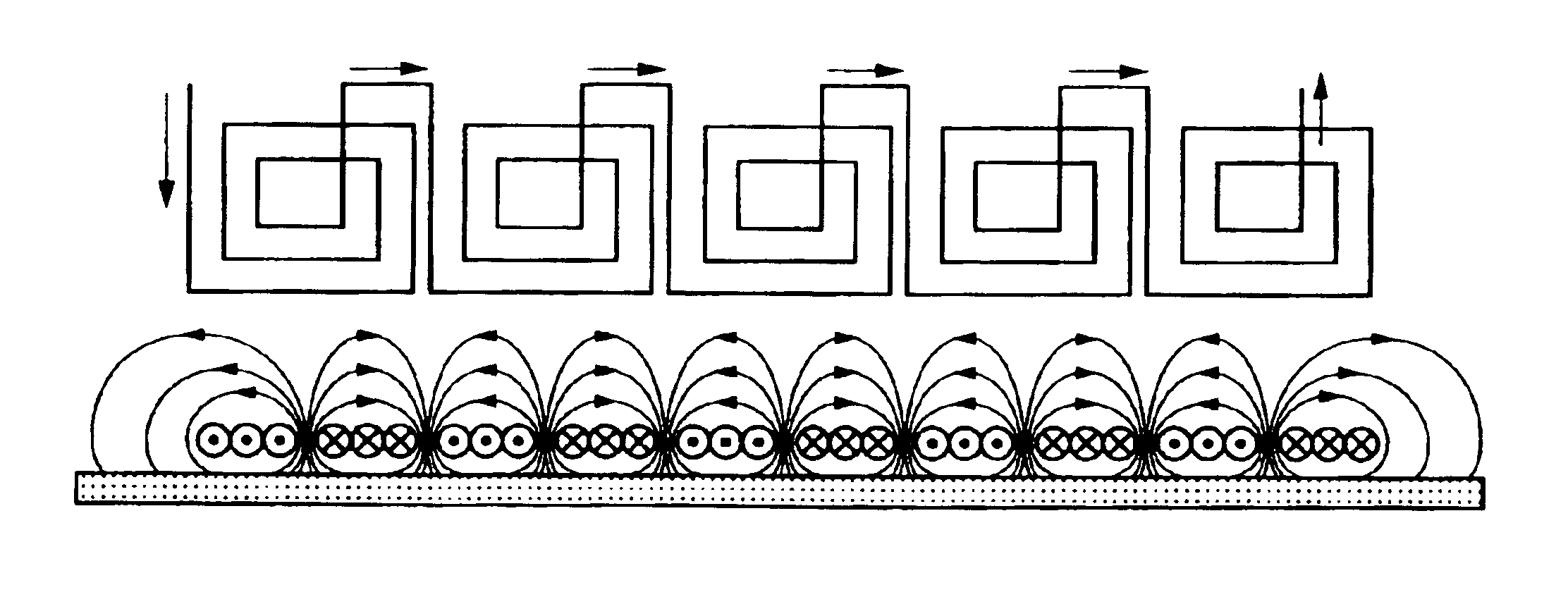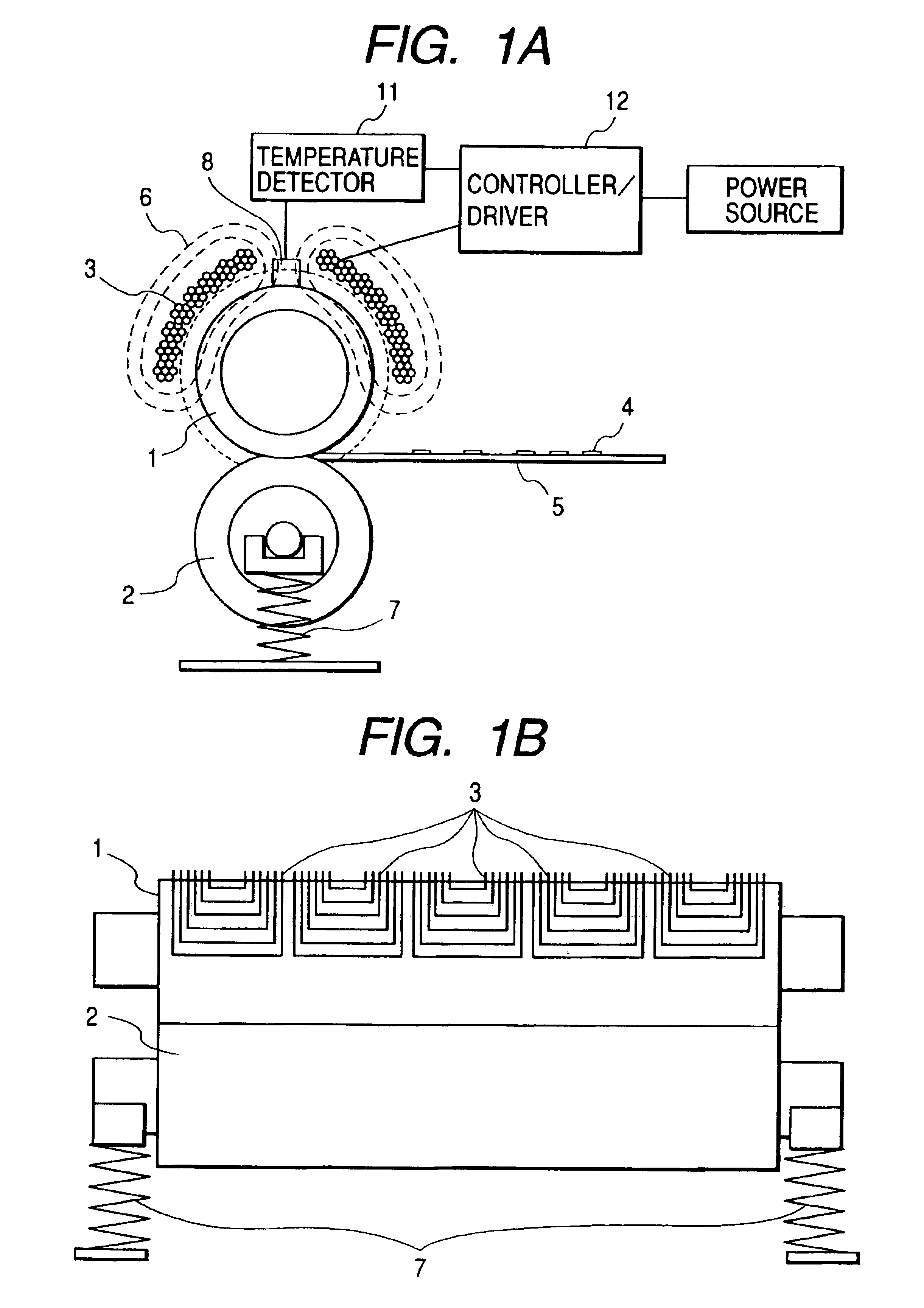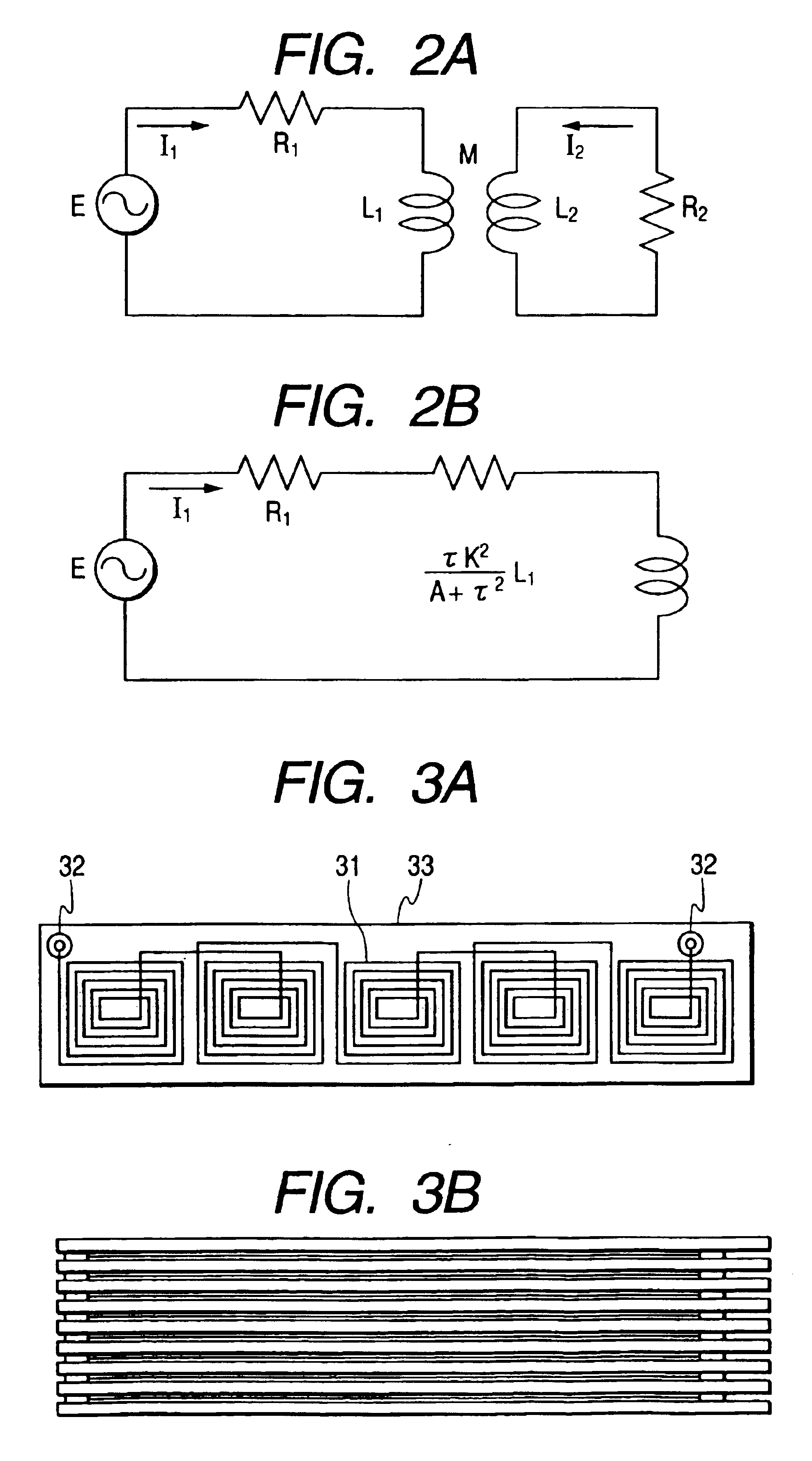Fixing device
a technology of fixing rollers and fixing parts, which is applied in the direction of electromechanical heating, electric/magnetic/electromagnetic heating, instruments, etc., can solve the problems of reducing affecting the efficiency of induction heating, and wasting time, so as to reduce the amount of heat loss, the effect of reducing the thermal capacity of the heating layer and reducing the heat loss
- Summary
- Abstract
- Description
- Claims
- Application Information
AI Technical Summary
Benefits of technology
Problems solved by technology
Method used
Image
Examples
first embodiment
[0140]The preferred embodiment of the present invention will be described with reference to the accompanying drawings. the invention will be discussed below.
[0141]In FIG. 1A, a fixing roller 1 is formed with a heating layer, which is electrically conductive and small in thermal capacity, and a release layer. If necessary, an elastic layer of several tens to several hundreds μm thick is additionally layered under the release layer. The heating layer must be conductive in order to efficiently generate an eddy current therein by an AC magnetic field developed from a coil 3 (reference numeral 6 denotes a magnetic flux from the coil 3). The release layer is provided to secure an easy separation of fused toner from the fixing roller 1, viz., to prevent an offset of the toner image. A preferable material of the release layer is any of fluorine plastics (PFA, PTFE, PEP), silicone resin, fluororubber, silicone rubber and others. A thickness of the release layer is preferably within several t...
second embodiment
[0164]the present invention will be discussed below.
[0165]In FIG. 8A, a fixing roller 201 includes a core bar which enables the fixing roller to rotate, and is rotatably supported at both ends by means of bearings. A rotational torque from a motor is transmitted to the fixing roller by way of gears and a belt, and in turn is rotated at a fixed angular velocity. An elastic layer for forming a nip is layered on the circumferential outer surface of the core bar. A heating layer and a release layer are further layered on the circumferential outer surface of the elastic layer. A pressure roller 202 is formed with a core bar and an elastic layer. When it is used for both-side printing, a release layer is formed on the surface of the pressure roller. The pressure roller is confronted with the fixing roller 201 and pressed by the spring 207 to form a nip between them, and follows in rotation the fixing roller 201 with a frictional contact therebetween. The detailed structure of the fixing r...
third embodiment
[0195]FIG. 15 shows a fixing device capable of easily forming a horizontal nip, which is the invention. An auxiliary roller pair 209 is in contact with a pair of a fixing roller 201 and a pressure roller 202 at a position located upstream of a pair of a fixing roller 201 and a pressure roller 202, and in this state assists the fixing and pressure rollers in forming a nip therebetween. The auxiliary roller pair 209 may also be designed so as to assist the fixing and pressure rollers in the nip formation in a state that the roller pair is in contact with at least the fixing roller 201.
[0196]It should be understood that the invention is not limited to the above-mentioned embodiments, but may variously be modified, altered and changed within the true spirits of the present invention.
[0197]In the fixing device of the invention, the fixing roller has a structure which includes a thin metal heating layer which reduces its thermal capacity and a rise time of heating, a core bar, an elastic ...
PUM
 Login to View More
Login to View More Abstract
Description
Claims
Application Information
 Login to View More
Login to View More - R&D
- Intellectual Property
- Life Sciences
- Materials
- Tech Scout
- Unparalleled Data Quality
- Higher Quality Content
- 60% Fewer Hallucinations
Browse by: Latest US Patents, China's latest patents, Technical Efficacy Thesaurus, Application Domain, Technology Topic, Popular Technical Reports.
© 2025 PatSnap. All rights reserved.Legal|Privacy policy|Modern Slavery Act Transparency Statement|Sitemap|About US| Contact US: help@patsnap.com



